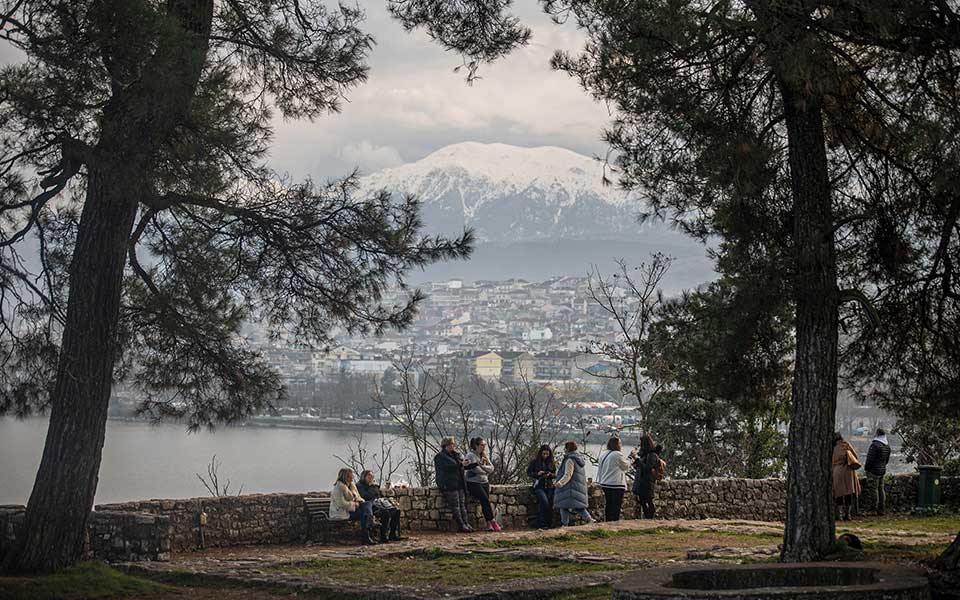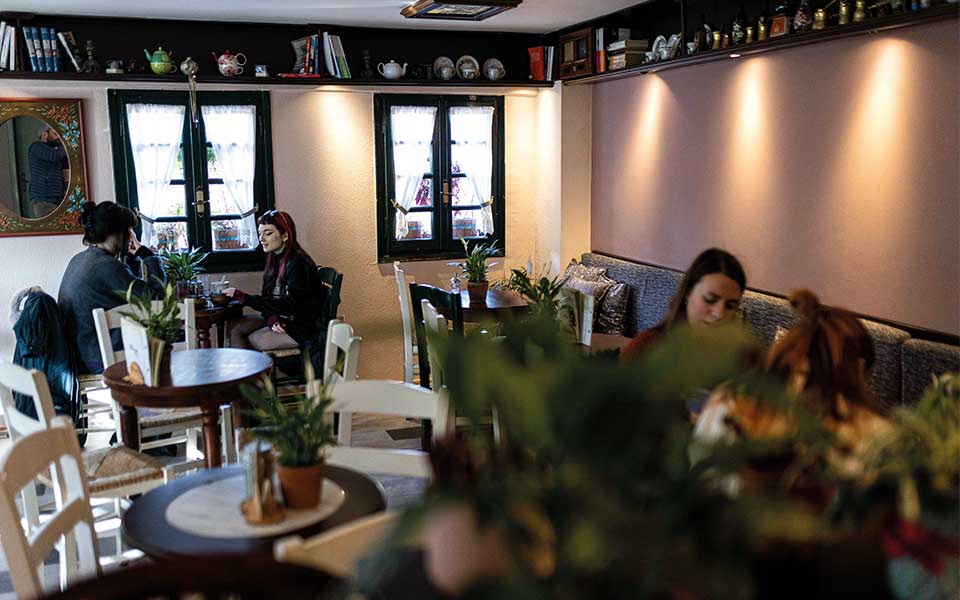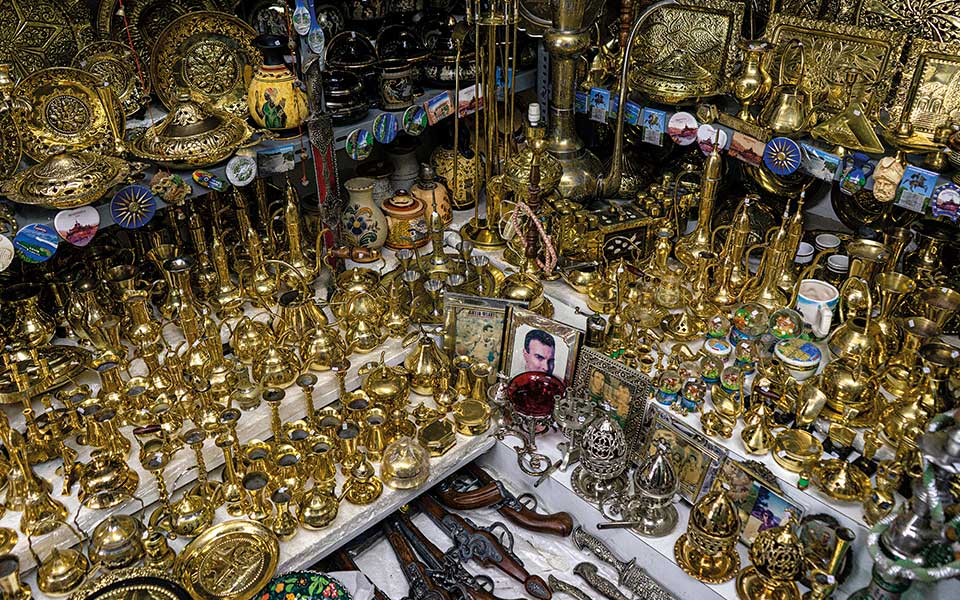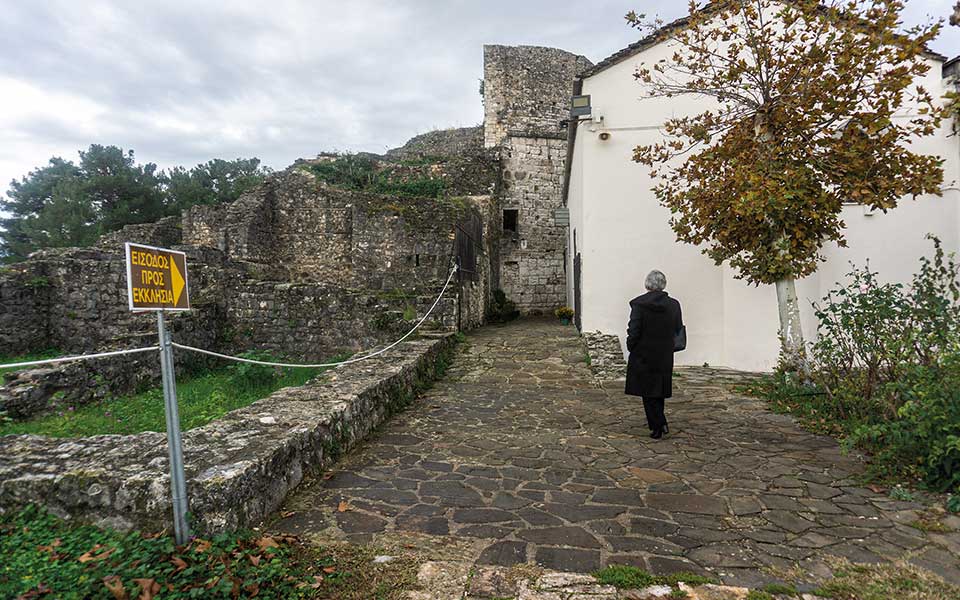Moments in time: A walk through the old castle of Ioannina

A village within a city. Enclosed and embraced by the walls, there is a world of memories, an entire universe. For visitors, it is a refuge from the noise of the city and a destination with sights and monuments that bring the past to life in front of them. For the locals, a neighborhood where everyone knows each other, with its school, grocery store, well-kept courtyards, and low houses; with the good mornings and good evenings of a bygone, perhaps more innocent, era.
Having preserved its residential character, the Castle never evolved into a tourist attraction, even though some of Ioannina’s most important landmarks are located here, in the old town: the early-17th-century Aslan Pasha Mosque, which in addition to its central building also houses a turbe (the mausoleum of the founder’s family), a madrasa (theological school), a kitchen, and the Municipal Ethnographic Museum with its three collections – Christian, Jewish, Muslim – representing the city’s multicultural history; the Its Kale acropolis, home to the 18th-century Fethiye Mosque, the tomb of Ali Pasha, the Voimoundos Tower (one of the few remaining examples of fortifications from the Byzantine era in Ioannina), the Silversmithing Museum of the Piraeus Group Cultural Foundation, and the Byzantine Museum; the impressive Sofarai Sarai, former site of Ali Pasha’s cavalry school and current home to G.A.K. – Historical Archive of Epirus; the Tower of Thomas near the main gate, a representative example of Byzantine period architecture, possibly constructed by the Serb ruler of the city, Thomas Preljubović; the Turkish Library and the hammam, one of the earliest Ottoman monuments in Ioannina; and, of course, the Jewish Synagogue, one of the largest and oldest surviving buildings of its kind in Greece today.

Moments in Time
Exploring the Castle’s monuments helps “structure” the past in the visitor’s eyes, bringing it closer to the present. Time is palpable everywhere in the Castle, even though you may lose track of it as you walk through its quiet alleys after the rain: at the juncture of Glykidon and Palaiologou streets or at the small and unpretentious Minoa Matsa Square where you can see Kostas Varotsos’s sculpture the “Cypress”; in the window of Spyros Gogonis’ antique shop, where every day he arranges and rearranges his wares – old bells, pulleys, pots, candleholders, a little bit of everything; in the Sunday service at the church of Aghioi Anargyroi in Its Kale – perhaps the only time of the week when you see so many of the Castle’s residents gather at its most touristy spot; in the beautiful courtyard of the Arte Povera café-restaurant, with its orange tree laden with fruit, and the cozy upstairs room at the Chevalier, where you’ll enjoy a warm cup of tea after your walks to ward off the bone-piercing humidity; finally, in the few architectural details that preserve the settlement’s traditional elements, as most of the houses in the Castle were either built after 1970, or radically reconstructed until the strict rules and framework of the urban planning decree of 1989 came into effect.


The walls built by Ali Pasha to turn the Castle into an impregnable fortress dominate the scene as you stroll by the lake under the tall plane trees. The wide moat, which was once flooded with water from the lake to strengthen the Castle’s defenses against invaders, no longer exists, having been filled in after the Liberation (1913). However, it is the impressive wall gates with their stone arches, vaulted roofs, lions (symbols of Ali’s power), and galleries, which vividly bring to life the late Ottoman period and the rule of Ali Pasha, to whom the castle owes its present form. Nitsa Syniki-Papakosta, a self-taught artist from Ioannina, made detailed sketches of each of these galleries years ago, compiled in a hard-to-find edition that is no longer in print.
There are indications and findings of the existence of a walled settlement on the rocky peninsula of the Castle dating back to the late Classical and Hellenistic periods. However, it was during the reign of Michael I Komnenos Doukas (1205-1215), the founder of the Despotate of Epirus, that members of aristocratic families settled in the Castle, seeking refuge here after the Fall of Constantinople to the Franks in 1204. Two citadels were built on the two natural elevations in its interior, surrounded by solid walls. Parts of the Byzantine fortifications that were in good condition were later preserved by Ali Pasha. Following the surrender of Ioannina to Sinan Pasha in 1430, Christians, Jews, and Muslims coexisted within the castle town until the failed uprising of Dionysius the Philosopher (or “Dog Philosopher”) in 1611 resulted in the expulsion of all Christians.

The Castle Today
Today’s Castle residents are witnessing Ioannina’s gradual transformation, as new highways and better-quality air connections provide easier and faster access to the city. New boutique guesthouses are vying for the attention of travelers, the value of land is skyrocketing, and redevelopment projects are underway to connect the northeastern acropolis with the southeastern one (Its Kale), transforming the archaeological site and the Castle into a unified monument complex accessible to people with disabilities.
“When we saw tourists in Ioannina fifteen years ago, we used to say, ‘Look guys, this is what tourists look like!’ Before the Ionian Highway was built, when we planned to travel to Athens on a Friday, we would take it easy the entire week leading up to the trip, to prepare for the long journey ahead. Things like that have shaped people’s mentality; the effects of geographic isolation do not disappear overnight,” says Paris Foukis, one of the few businessmen operating within the Castle. Hotelier George Iliadis recalls that when he welcomed his first guests in 2015, there were a total of 28 rooms in the Castle. Today, there are approximately 60. “People from the villages would come and buy plots of land to build their houses. It was a working-class neighborhood. Just think that in the 1950s there was a farmer’s market outside the walls on Ethnikis Antistaseos Street; they even sold chickens here. Now, property is unaffordable. There is nothing for sale, but even if you do find something it costs a fortune. The Castle is the most up-and-coming area of Ioannina…”





